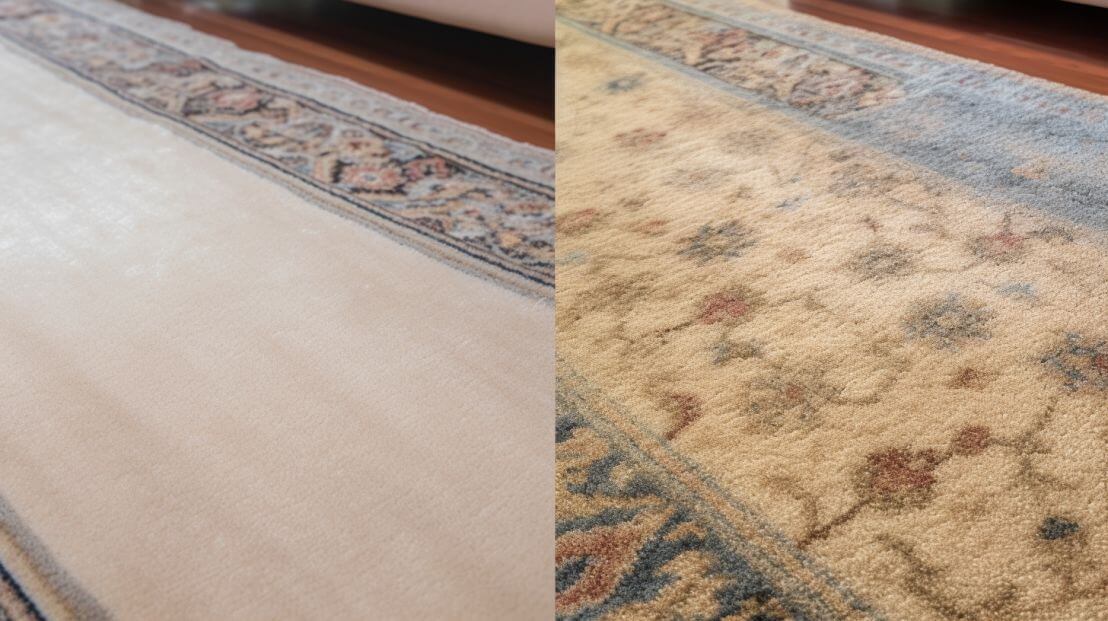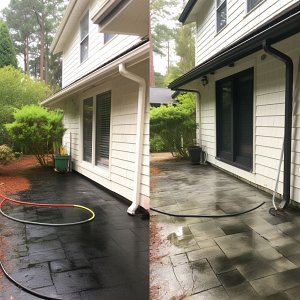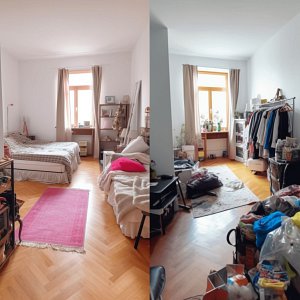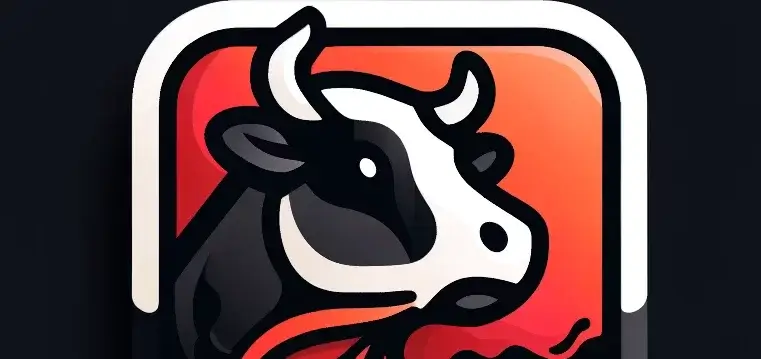Viral content has taken the internet by storm over the past decade, but what does it actually mean for content to go viral? Simply put, viral content is any piece of media that spreads rapidly online through shares, likes, and comments. It grabs people’s attention and compels them to spread it, turning a single post or video into a global phenomenon. This kind of content can come in many forms—funny memes, shocking videos, heartwarming stories—but the key is that it resonates with a broad audience and is easy to share.
Understanding what makes content go viral isn’t just for social media influencers or big brands; it’s crucial for niche markets too, like the cleaning industry. Why? Because viral content can significantly boost brand visibility, attract new customers, and even change consumer perceptions. In the cleaning industry, where competition can be fierce and customer loyalty is highly valued, creating viral content can set a company apart. Knowing the ins and outs of viral trends helps businesses craft content that not only engages but also converts.
The main aim here is to dig into what makes content go viral in the cleaning industry. We’ll look at the types of content that tend to take off, the elements that make them popular, and the role of different social media platforms in spreading these messages. By the end, you’ll have a clearer picture of how to leverage viral content to boost your cleaning business’s online presence.

Overview of the Cleaning Industry
The cleaning industry isn’t just about mops and buckets. It’s a broad field that covers everything from residential cleaning to commercial janitorial services and specialized cleaning for industries like healthcare and hospitality. Think about all the different spaces that need cleaning—from homes and offices to factories and schools. Each of these spaces requires specific skills, products, and equipment, which means the cleaning industry is incredibly diverse.

When we talk about market segmentation in the cleaning industry, we’re really looking at how different segments address specific needs. For instance, residential cleaning focuses on homes and apartments, offering services like dusting, vacuuming, and sanitizing bathrooms. Commercial cleaning, on the other hand, is more about maintaining offices, retail spaces, and public buildings. Then there’s industrial cleaning, which might involve more heavy-duty work, like cleaning factories or machinery.
Each segment has its own set of challenges and requirements, but they all share a common goal: keeping environments clean and safe. Understanding these segments helps businesses tailor their viral content to target the right audience with the right message.
Key Players and Influencers
The cleaning industry has its fair share of big names and rising stars. Companies like Clorox, Procter & Gamble, and Ecolab dominate the commercial and industrial segments, while smaller local businesses and independent contractors often make up the residential market. But it’s not just companies that are making waves—social media influencers are too. Influencers like GoCleanCo and Mrs. Hinch have amassed huge followings by sharing cleaning tips, tricks, and product recommendations, proving that there’s a real appetite for this kind of content online.
Trends and Developments
Just like any other industry, the cleaning sector is constantly evolving. One of the biggest trends right now is the move towards eco-friendly products and practices. More and more consumers are looking for green cleaning solutions that are safe for the environment and their families. Technology is also playing a big role, with innovations like robotic vacuums, AI-powered cleaning tools, and even apps that help manage cleaning schedules. These trends aren’t just interesting—they’re important for understanding what kind of content might resonate with an audience today.
Understanding Virality: General Concepts
Psychological and Social Factors
So, what makes people click that share button? There are a few psychological and social factors at play when it comes to why content goes viral. Emotion is a big one. Content that makes people feel something—whether it’s joy, surprise, anger, or nostalgia—tends to get shared more. Then there’s social currency. People like to share content that makes them look good or reinforces their identity to others. It’s like being the first to tell a funny joke at a party—everyone likes being in the know.
Social influence is another factor. When people see their friends or people they admire sharing something, they’re more likely to share it too. This is where networks come into play. A piece of content might start with just a few shares, but if those shares reach the right people, it can snowball quickly.
Elements of Viral Content
What do all viral posts have in common? They usually have a few key elements: they’re engaging, they’re easy to understand, and they’re often a bit unexpected. Engaging content grabs your attention right away—think catchy headlines, bright visuals, or a strong opening line. It’s also usually pretty easy to digest. People are more likely to share content that doesn’t require a lot of effort to understand. And finally, there’s often an element of surprise or novelty. Viral content isn’t just interesting; it’s often something people haven’t seen before.
Platform-Specific Virality
Not all social media platforms are created equal when it comes to viral content. Each one has its own quirks and algorithms that can affect what gets seen and shared. On TikTok, for instance, short, catchy videos with a strong hook in the first few seconds tend to perform well, thanks to the platform’s focus on quick, snackable content. On Instagram, visually appealing photos or Reels, often accompanied by trending audio or popular hashtags, are more likely to go viral. Facebook, meanwhile, is great for longer videos and articles, especially if they tap into current events or trending topics.
Understanding these differences is crucial for crafting content that’s tailored to each platform’s unique audience and strengths.
Characteristics of Viral Content in the Cleaning Industry
Types of Popular Content
The cleaning industry has its own set of content that tends to go viral. One of the most popular formats is the before-and-after transformation. There’s something incredibly satisfying about seeing a messy, cluttered space get transformed into a clean, organized one in just a few seconds. These videos are often sped up to show the process in a time-lapse, which makes the transformation seem even more dramatic.
Product demonstrations and reviews are also big. People love seeing cleaning products in action, especially if they’re trying to decide whether to buy them. Then there are the cleaning hacks—quick tips and tricks that promise to make cleaning easier or more efficient. This type of content is not only shareable but also provides real value to the viewer.
Visual Appeal
In the cleaning industry, visual appeal is everything. People are drawn to content that’s visually striking, whether it’s a sparkling clean sink or a perfectly organized pantry. High-quality production values can make a big difference here—bright, clear images and videos are much more likely to catch someone’s eye as they scroll through their feed.
But it’s not just about pretty pictures. There’s also something known as the “oddly satisfying” effect. This is that feeling you get when you watch something that’s just…really satisfying. It might be a video of someone power-washing a dirty driveway or a perfectly folded pile of laundry. These kinds of visuals are almost hypnotic, which makes them perfect for sharing.
Storytelling and Emotional Appeal
Good storytelling can turn even the most mundane cleaning task into something compelling. By framing a video around a personal story or customer testimonial, content creators can make their audience feel more connected to the content. For example, a video that shows a person cleaning up after a party might tap into feelings of nostalgia or relief, while a story about a small business owner making their first big sale can evoke pride or inspiration.
Emotional appeal is all about tapping into those feelings and using them to create a connection with the audience. Whether it’s a funny mishap that makes people laugh or a touching moment that brings a tear to their eye, content that evokes emotion is more likely to be shared.
Educational Value
One of the reasons cleaning content does so well online is that it’s inherently educational. People are always looking for new tips and tricks to make their cleaning routines easier or more effective. How-to guides, tutorials, and tips that provide real value to viewers are especially popular. For example, a video showing how to remove tough stains from carpets using household items can attract a lot of views and shares because it solves a common problem.
Educational content doesn’t just have to be about cleaning techniques, though. It can also include information about products, such as reviews or comparisons, that help people make informed purchasing decisions. This kind of content positions the creator as an expert in their field, which can build trust and encourage more engagement.

Case Studies of Viral Content in the Cleaning Industry
To really understand what makes content in the cleaning industry go viral, it helps to look at some real-life examples. One standout case is the Scrub Daddy campaign. Scrub Daddy, a company that makes smiley-face sponges, exploded in popularity after appearing on the TV show “Shark Tank.” The brand capitalised on this initial exposure by creating engaging content that highlighted the unique features of their sponges. Their videos often feature dramatic before-and-after cleaning transformations and fun, light-hearted demonstrations. By keeping their content entertaining and visually appealing, Scrub Daddy managed to capture a large audience on platforms like Instagram and TikTok.
Another great example is the rise of cleaning influencers like Mrs. Hinch and GoCleanCo. Mrs. Hinch, a UK-based Instagram influencer, became famous for her relatable cleaning tips and personable content style. She uses her platform to share quick cleaning hacks and product recommendations, often in a fun and approachable way that makes cleaning seem less of a chore and more of a hobby. GoCleanCo, on the other hand, grew popular on TikTok by sharing satisfying cleaning videos that often show them tackling incredibly dirty spaces. Their use of humour and practical advice resonated with viewers, leading to millions of followers and widespread engagement.
Breakdown of Key Elements
So, what exactly made these campaigns and influencers so successful? Let’s break it down:
- Engaging Content: Both Scrub Daddy and these influencers produce content that captures attention right away. Whether it’s a quirky product demo or a dramatic cleaning transformation, the content grabs you in the first few seconds, which is crucial for keeping viewers hooked.
- Consistency: Posting regularly helps keep the audience engaged. Mrs. Hinch is known for her consistent updates, sharing daily cleaning routines and tips that her followers look forward to. This regularity builds a community and keeps people coming back for more.
- Authenticity: Authenticity is key to building trust. Mrs. Hinch, for instance, is very transparent about her cleaning routines and product preferences, often sharing personal stories and showing her own home. This genuine approach makes her followers feel like they know her, which increases engagement and sharing.
- Humour and Relatability: GoCleanCo’s use of humour and relatable content—like tackling a disastrously messy room—makes their content more shareable. People enjoy watching something they can relate to or find funny, and they’re more likely to share that content with their friends.
- Visual Appeal: High-quality visuals are a must. The ‘before-and-after’ format, widely used by Scrub Daddy and GoCleanCo, creates a visually satisfying experience that viewers find appealing and love to share.
From these case studies, it’s clear that creating viral content in the cleaning industry requires a mix of engaging storytelling, consistency, authenticity, and high-quality visuals. These elements not only attract viewers but also encourage them to share the content, boosting its virality. For businesses or individuals looking to break into this space, focusing on these key aspects can greatly increase the chances of creating content that resonates and goes viral.

Impact of Viral Content on the Cleaning Industry
Consumer Behaviour
Viral content has a massive impact on consumer behaviour. When a cleaning product or brand gains popularity through viral content, it can quickly become a must-have item. Take the example of Scrub Daddy again: after their viral exposure, sales skyrocketed. This kind of content creates a buzz that drives people to try products they might not have considered otherwise. It also influences how consumers think about cleaning as a whole—shifting it from a mundane task to something that’s fun or even therapeutic.
Brand Awareness and Loyalty
Viral content does wonders for brand awareness. When a video or post goes viral, it reaches far beyond the brand’s usual audience, introducing new people to the product or service. This kind of exposure is invaluable because it builds brand recognition and can turn a small business into a household name almost overnight. Moreover, consistent viral content can foster loyalty among consumers. When people see a brand regularly producing engaging and helpful content, they’re more likely to trust that brand and become repeat customers.
Market Trends and Innovations
Viral content often sets or accelerates trends in the cleaning industry. For example, the surge in popularity of eco-friendly cleaning products can be partly attributed to viral content highlighting their benefits. Influencers and brands that create viral content around green cleaning practices are not just responding to market demand—they’re helping to shape it. Additionally, when a particular cleaning hack or product gains traction, it can drive innovation as companies strive to create new products or improve existing ones to meet consumer demand.
Challenges and Risks
While the benefits of viral content are clear, there are also some risks and challenges. For one, the fast-paced nature of viral trends means that content can quickly become outdated. What works today might not work tomorrow, so brands need to constantly innovate to stay relevant. There’s also the risk of backlash—viral content is subject to public scrutiny, and if a post is seen as offensive or misleading, it can lead to negative publicity and even boycotts.

Strategies for Creating Viral Content in the Cleaning Industry
Understanding Your Audience
The first step to creating viral content is knowing who you’re trying to reach. Are you targeting busy parents looking for quick cleaning hacks, or are you aiming at young professionals interested in eco-friendly products? Understanding your audience means you can tailor your content to their specific needs and interests, which makes it more likely to resonate and be shared.
Content Creation Best Practices
When it comes to actually creating the content, there are a few best practices to keep in mind:
- Keep It Simple: Content that is easy to understand and digest is more likely to be shared. Avoid jargon or overly complicated explanations—get straight to the point.
- Make It Visual: High-quality images and videos are essential. Use bright, clean visuals that stand out on someone’s feed and immediately convey the value of your content.
- Be Authentic: Authenticity builds trust. Whether you’re an influencer or a brand, being genuine in your content—showing real-life cleaning challenges and solutions—can make a big difference in how it’s received.
- Incorporate Trends: Stay up to date with social media trends and incorporate them into your content when relevant. This can help your content feel fresh and timely, which increases its chances of going viral.
Leveraging Platforms and Tools
Different platforms cater to different audiences and types of content. TikTok is great for short, catchy videos, while Instagram works well for visually appealing posts and stories. Facebook is useful for longer videos and articles that might engage a more mature audience. Make sure to use the platform that aligns with your target audience and the type of content you’re creating.
Tools like hashtags, collaborations with other influencers, and even paid promotions can help boost your content’s reach. Hashtags can make your content discoverable to a wider audience, while collaborations can bring new followers to your account. Paid promotions are a more direct way to increase visibility, especially if you’re just starting out.
Monitoring and Analysing Performance
Creating viral content isn’t just about putting something out there and hoping it sticks. It’s also about analysing what works and what doesn’t. Keep an eye on metrics like views, shares, comments, and engagement rates to see how your content is performing. Use this data to refine your strategy and make adjustments as needed. Analytics tools on platforms like Instagram and TikTok can provide valuable insights into your audience and what kind of content they’re responding to.

Final Thoughts
To wrap things up, viral content in the cleaning industry is all about creating engaging, shareable material that resonates with a wide audience. Whether it’s through satisfying before-and-after transformations, educational tutorials, or relatable storytelling, the goal is to connect with viewers on a personal level. By understanding the elements that contribute to virality and tailoring content to specific platforms, businesses can significantly enhance their online presence.
For businesses in the cleaning industry, understanding what makes content go viral can open up new opportunities for reaching potential customers and building a loyal audience. With these strategies, medium-sized companies like Optima Cleaners can leverage viral content to boost their visibility and attract more clients. By consistently producing high-quality, engaging content that appeals to their target audience, companies can differentiate themselves from competitors and strengthen their market position.
As we move into the future, the cleaning industry will continue to evolve, and so will the ways we create and consume content. By staying flexible, innovative, and ethical, brands can ensure that they remain relevant and continue to capture the hearts and minds of their audience. Whether you’re a small business, a medium-sized company like Optima Cleaners, or an established brand, the potential of viral content is immense—it’s all about finding the right formula to make your content resonate.
